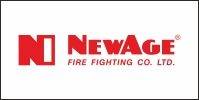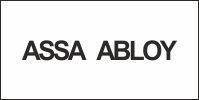 Water mist fire protection systems share many similarities with sprinkler systems. Both systems use water as the suppression medium, pumped through a network of pipes and zone valves, and deployed within the affected area via ceiling or wall-mounted heads. The main difference is the working pressure of each system. While sprinkler systems typically operate below 12 bar [175 psi], high-pressure water mist systems operate within the range of 35 – 120 bar [500-1740 psi].
Water mist fire protection systems share many similarities with sprinkler systems. Both systems use water as the suppression medium, pumped through a network of pipes and zone valves, and deployed within the affected area via ceiling or wall-mounted heads. The main difference is the working pressure of each system. While sprinkler systems typically operate below 12 bar [175 psi], high-pressure water mist systems operate within the range of 35 – 120 bar [500-1740 psi].
Sprinkler systems typically work by drenching the surfaces of the fuel and surrounding surfaces; water mist systems work by rapid cooling of the fire via vaporisation of the water droplets into steam. The higher the pressure of the system; the smaller the diameter of the water droplets from each head. So, while a sprinkler system will produce droplets with a typical diameter of 1mm or more, ULTRA FOG® water mist systems produce water droplets with a typical diameter of 0.1mm. Why does this matter? The smaller the droplets, the faster the rate of heat transfer, and the quicker the cooling and suppression of the fire. Further to this, the smaller the droplet, the slower it falls from the ceiling to the floor. Thereby water must not only exchange heat more rapidly, but it also remains suspended in the air for longer and has more time to interact with the heat and smoke of the fire. This makes water mist highly efficient, to the extent that ULTRA FOG® water mist systems typically consume up to 90% less water than sprinkler systems.
 Efficient use of water brings several benefits. A distinct advantage is the ability to use significantly smaller water tanks than sprinkler systems; and under certain jurisdictions, water mist systems’ minimal water consumption may present an opportunity to connect the water mist system directly to the mains water supply thereby removing the need for a storage tank. This opens the possibility for the architect or main contractor to utilise the space for other purposes, for example: to re-allocate the space for other essential services; or for car parking spaces for the building’s occupants.
Efficient use of water brings several benefits. A distinct advantage is the ability to use significantly smaller water tanks than sprinkler systems; and under certain jurisdictions, water mist systems’ minimal water consumption may present an opportunity to connect the water mist system directly to the mains water supply thereby removing the need for a storage tank. This opens the possibility for the architect or main contractor to utilise the space for other purposes, for example: to re-allocate the space for other essential services; or for car parking spaces for the building’s occupants.
Lower water consumption also enables water mist systems the use smaller diameter distribution pipework compared with sprinkler systems. ULTRA FOG® water mist systems typically utilise 12mm, 22mm, 28mm, and 42mm outside diameter stainless steel pipework. This saves space within ceiling voids – which are often shared with and occupied by the building’s HVAC, water main, drainage, lighting, communication, and power cable conduits. The use of small diameter pipe also simplifies the installation of the system and coordination of the pipework amongst the other services throughout the building. Pipes can be more easily cut, shaped, and handled onsite, without the need for extensive pre-fabrication.
Damage limitation is a further crucial advantage of water mist systems when compared with sprinkler systems. While the goal of both sprinkler systems and water mist systems is to suppress fire; their use within domestic, commercial, and industrial buildings can result in collateral, water damage. Sprinkler systems suppress fires by drenching the affected space with high volumes of water, to soak the fire’s fuel and its adjacent surfaces. Water mist systems contain fires by creating a shroud of mist around the fire, to cool the air within the affected space, and to suppress the fire by removing heat from the fire’s source. In addition to this, the exchange of heat from the fire to the mist causes expansion of the mist which displaces oxygen from the fire. Under laboratory test conditions, water mist systems typically deploy 10-20% of the water of an equivalent sprinkler system. In the real world, this translates as less water damage within the building and its valuable contents. For this reason, ULTRA FOG® water mist systems have been installed within a broad range of sensitive structures throughout the world – ranging from medieval buildings of significant cultural value; to highly secure, ultra-modern military facilities.
In light of these significant technical and commercial benefits, water mist systems are becoming more widely recognised as an alternative to sprinkler systems. National standards governing the testing, design, installation, and maintenance of water mist systems have been developed as a means of regulation within the industry. These include NFPA 750 (USA), CEN/TS 14972 (EU), NS-INSTA 900 (Norway), ISO 6182-9 (international), and most recently BS 8458 & BS 8489 for residential, domestic, industrial, and commercial water mist systems within the UK.
The demonstration of the cooling of the fire via vaporisation of the water droplets into steam done by a water mist nozzle.
 The origins of the development of water mist systems for marine and off-shore applications in the late 1980s was spurred by Montreal Protocol which phased-out the production of halon, amid concerns of CFCs’ detrimental effect on the ozone layer. Today, new environmental factors are driving demand for highly efficient water mist fire suppression systems.
The origins of the development of water mist systems for marine and off-shore applications in the late 1980s was spurred by Montreal Protocol which phased-out the production of halon, amid concerns of CFCs’ detrimental effect on the ozone layer. Today, new environmental factors are driving demand for highly efficient water mist fire suppression systems.
An example of this is within the residential sector, where there exists an ever-increasing need for housing; limited space to build; increasingly stringent energy efficiency targets; and an ever-present need to conserve water. Within urban environments, this is fuelling the rapid development of modern high rise buildings; the refurbishment of existing residential tower blocks; and in some cases, the redevelopment and change of use of office blocks into residential dwellings. While new-build high rise buildings are generally required to be equipped with an active fire suppression system; at present, most jurisdictions do not require sprinkler systems to be retroactively installed within older tower blocks constructed under superseded or obsolete regulations. In the absence of active fire suppression, life safety and damage limitation is reliant upon the concept of “compartmentation” – the containment of a fire within a dwelling, via the use of fire-resistant doors, partitions, and ceilings. Rigorous building control measures are necessary throughout the life of the building to ensure that any subsequent modification to the fabric of the building does not compromise the building’s fire stopping. The fire at Lakanal House, London in 2009 serves as a reminder of the fatal consequences of the breaching of passive fire-stopping, and the subsequent threat to life in the event of failure of compartmentation. Comprehensive inspection and assessment of the fire stopping throughout a building is often an impossible task, mainly as passive fire protection elements are usually concealed behind architraves, rendering, and other permanent, non-removable cosmetic finishes. As such, if building control is lacking during the construction and subsequent modification of the fabric of the building, defects within passive fire stopping can remain undetected for years. In contrast, sprinkler and water mist systems are engineered to detect particular faults automatically, and these systems are designed to enable rapid fault diagnosis within a regular schedule of basic maintenance and inspection.
Historically, sprinkler systems may have been the only option for architects, consultants, and main contractors for particular projects. The relatively recent formal recognition, standardisation, and acceptance of water mist systems for land-based applications opens new possibilities and offers the potential for both technical and commercial benefits when compared with sprinkler systems. In summary: water mist systems provide the potential for smaller pump units, less pipework, smaller pipe diameters, fewer heads, smaller water tanks, less water consumption, and lower running costs than that of sprinkler systems.
As the environmental, technical, and social challenges of global fire safety evolve; ULTRA FOG® continues to build upon its 30 years’ experience of the research, development, and manufacturing of highly reliable water mist fire suppression systems and remains at the forefront of this life-saving technology.


















































